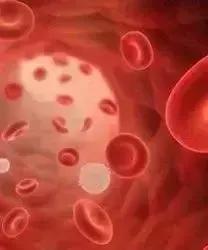Sintilimab Plus Decitabine Demonstrates 62% ORR in Untreated, Higher-Risk MDS
The combination of the PD-1 antibody sintilimab and decitabine elicited potent clinical activity and manageable safety with no grade 4 or 5 treatment-related adverse effects as frontline therapy in patients with higher-risk myelodysplastic syndrome, according to preliminary results from a phase 2 trial.

The combination of the PD-1 antibody sintilimab and decitabine elicited potent clinical activity and manageable safety with no grade 4 or 5 treatment-related adverse effects (TRAEs) as frontline therapy in patients with higher-risk myelodysplastic syndrome (MDS), according to preliminary results from a phase 2 trial presented at the 2022 EHA Congress.
At a median follow-up of 7.1 months, the objective response rate (ORR) was 62%; 6 patients achieved a complete response (CR), 4 achieved a marrow CR (mCR), and 3 patients experienced an mCR plus hematologic improvement (HI). Another 4 patients achieved HI alone.
“This study is, to the best of our knowledge, the first to evaluate the safety and efficacy of anti–PD-1 antibody [therapy] plus decitabine in patients with untreated higher-risk MDS,” lead study author Jing Wang, MD, of Peking University People’s Hospital, and coauthors wrote in the poster. “Sintilimab plus decitabine had manageable safety and clinical activity in these patients.”
Hypomethylating agents (HMAs) are favored as the frontline standard therapy for patients with higher-risk MDS, but survival with subsequent lines of treatment is poor. PD-1/PD-L1 expression has documented upregulation with HMAs in patients with MDS, serving as the rationale for the combination study in this population.
The Simon’s two-stage, single-arm study enrolled 52 patients with newly diagnosed MDS who were unfit for intensive chemotherapy, had a Revised International Prognostic Scoring System (IPSS-R) score above 3.5, and an ECOG performance status between 0 and 2.
Eligible patients received 20 mg/m2 of intravenous (IV) decitabine on days 1 through 5 every 6 weeks plus 200 mg of IV sintilimab on day 1 every 3 weeks; 1 cycle consisted of 42 days. Treatment was continued until progression, death, unacceptable toxicity, withdrawal of consent, other protocol-defined reasons, or up to 8 cycles.
The primary end point was ORR, which included the percentage of CRs, partial responses, and mCRs. Secondary end points comprised safety, overall improvement rate, CR rate, disease-free survival, event-free survival (EFS), and overall survival (OS).
An exploratory analysis evaluated the relationship between expression levels of the immune checkpoint and activity of the combination regimen in addition to other potential biomarkers, which were examined through genomic profiling.
The data cutoff was April 16, 2022, at which point, 26 patients had been enrolled. A total of 21 patients were evaluable for response.
Regarding baseline characteristics, the median patient age was 65 years (range, 30-83) and most patients were male (n = 18; 69.2%). The median laboratory values were 10% (range, 0%-18.5%) for bone marrow blasts, 2.26 x 109/L(range, 0.6-8.3) for white blood cell counts, 69.5 g/dL (range, 36-125) for hemoglobin, and 42 x 109/L (range, 6-253) for platelets.
Patients had an IPSS-R category of intermediate (n = 4; 15.4%), high (n = 10; 38.5%), or very high (n = 12; 46.1%) and cytogenetics classified as normal (n = 10; 38.5%), complex (n = 7; 26.9%), or other (n = 9; 34.6%). Genetic mutations were found in TET2 (n = 7; 26.9%), ASXL1 (n = 6; 23.1%), and RUNX1 (n = 6; 23.1%).
Additional results indicated that the median EFS and OS have not yet been reached.
Regarding safety, all-grade TEAEs occurring in at least 10% of patients included hypoalbuminemia (n = 23; 88.5%), febrile neutropenia (n = 19; 76.9%), hypocalcemia (n = 18; 69.2%), hypopotassemia (n = 15; 57.7%), elevated lactate dehydrogenase (n = 11; 42.3%), elevated gamma glutamyltransferase (n = 10; 38.5%), pulmonary infection (n = 9; 34.6%), pleural effusion (n = 9; 34.6%), rash (n = 6; 23.1%), pericardial effusion (n = 5; 19.2%), elevated alanine aminotransferase (n = 4; 15.4%), increased creatinine (n = 4; 15.4%), esophagitis (n = 4; 15.4%), elevated serum concentration of cardiac troponin (n = 4; 15.4%), hypofibrinogenemia (n = 4; 15.4%), and hypothyroidism (n = 3; 11.5%).
The most common grade 3 TEAEs occurring in at least 10% of patients were febrile neutropenia (n = 9; 34.6%) and pulmonary infection (n = 7; 26.9%); hypopotassemia (n = 1; 3.8%), elevated gamma glutamyltransferase (n = 2; 7.7%), rash (n = 2; 7.7%), hypofibrinogenemia (n = 1; 3.8%), and hypothyroidism (n = 1; 3.8%) also occurred.
No grade 4 TEAEs or treatment-related deaths occurred.
Immune-related AEs occurred in 13 patients (50%) and included rash (23.1%), hypothyroidism (11.5%), pneumonia (7.7%), elevated serum bilirubin (3.8%), and transpeptidase (3.8%), all of which resolved with glucocorticoid treatment.
Reference
Wang J, Li S, Chang Y, et al. Anti–PD-1 antibody (sintilimab) plus decitabine as first-line treatment for patients with higher-risk myelodysplastic syndrome (MDS): preliminary results from a single-arm, open-label, phase II study. Presented at: EHA 2022 Hybrid Congress; June 9-12, 2022; Vienna, Austria. Abstract 7052.



